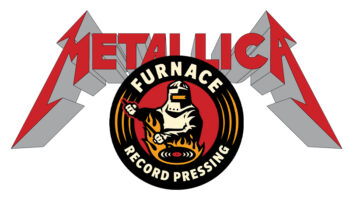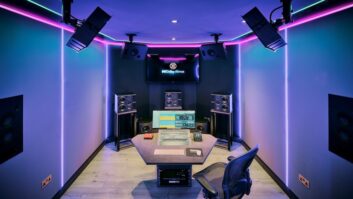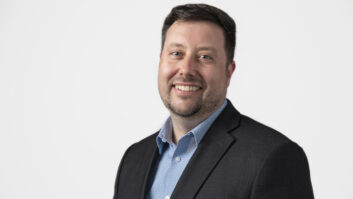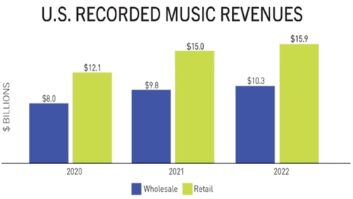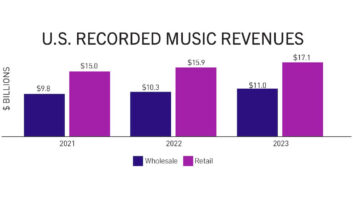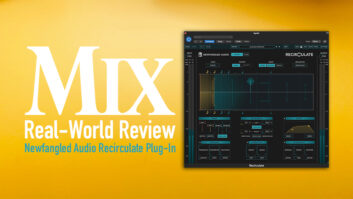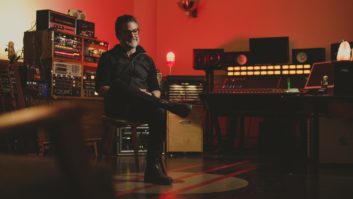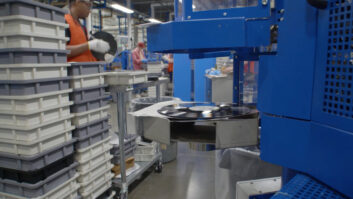Mastering Engineer Relies on Dangerous Music Equipment for Analog and Digital Releases
Edmeston, NY – June 26, 2008 – Mastering Engineer Mike Wells swears by his Dangerous Music setup as the best rig he’s ever used, and record labels agree by giving him lots of business – in one case an exclusive on all their mastering work. Through his use of the Dangerous Master for inserts and routing, Dangerous Monitor for input switching and monitor control and the Dangerous MQ for metering and headphones, Wells can turn out CD master and Vinyl pre-master files simultaneously, saving record labels and bands time and money – all while keeping an extremely consistent high-quality sound without tedious comparison listening.
“I recently completed mastering the new Sound Tribe Sector Nine CD, titled ‘Peaceblaster,’ it will be out this fall, with a special preview in July,” said Mike Wells. “Their label, 1320 Records, was really pleased with the quality of the mastering and the fact that in a single pass I can create both the CD master and the vinyl pre-master.”
On getting started with Dangerous gear, Wells explained, “I had wanted to put a system like this together ever since seeing and hearing Dangerous Music gear for the first time and because of Chris Muth’s reputation in the industry for designing and building transfer consoles for countless top mastering studios. The feature set I was looking for, as a result of building and tweaking my own routing system, Chris and Bob [Muller] at Dangerous Music had already addressed in their mastering rig – the combination of Dangerous Master, Monitor and MQ. When I had the chance to try the gear out, it totally delivered on all that I had hoped for. It is certainly a far more elegant solution to anything I saw that was available then or even now because of its simplicity, its sonic power, and its well thought-out design. It certainly trumped what I had built for myself. The MQ, the Monitor and the Master together create the modern-day transfer console.”
Wells details how he uses each of the three Dangerous components, “I have the Dangerous Master routed out to an XLR patch-bay that I built. I’m using about a quarter of the amount of cables with the Master, Monitor and MQ than I used in my old system, with the ability to re-patch the system at any time. With the three-insert points on the Master, it allows me to keep a basic starting point, and I can fine-tune it per session as necessary. The second insert on the Master has the magic S&M button – a sum-and-difference encoder/decoder that lets you affect stereo width and also process the material in mid-side. You can engage the sum-and-difference mode and insert analog processing in the loop if you want to for example de-ess the vocal in the center channel only and add bottom-end to the guitars panned to the sides without making the center muddy. And in combination with the Dangerous Monitor, you can separately monitor the sum and difference paths and hear the effect of your processing, which has been a very powerful addition I wasn’t able to do in the past.”
“The Dangerous Monitor is fantastic – it allows me to do some really cool things that I couldn’t do before. It can monitor a number of digital and analog sources, so one of the ways I use it is to monitor the signal from the DAW pre and post. I have two digital signals from my Lynx Aurora card, one before and one after the A-to-D stage, and they both go through the Dangerous Monitor D-to-A, so you are comparing different sources using the same D/A converter at the same level. This process allows me to do a 100-percent, pure A-B, before and after my mastering system, all gain matched perfectly. In my old system I couldn’t do this. I couldn’t monitor the resulting last stage of A-to-D, which does color the signal, in real-time. Using the Lynx interface with dual/matched Lavry A/D converters in combination with the dual outputs of the Dangerous Master, I am able to capture two paths in real-time, one using the outboard analog signal path as the ‘Vinyl Pre-Master’ and one going through a final limiter in the digital domain for the CD Master and assets for Digital Distribution.”
“The MQ has VU meters, as well as a digital simultaneous peak-over-average meter that are fed from the selected output of the Dangerous Monitor. When listening to the outputs of the Dangerous Master I am able to see what my total level is as a result of the analog processors being inserted through the Master. If its bypassed or engaged I can instantly see where I am at, gain-wise, before-and-after. With the MQ I can better project where I want to be when I’m back in the digital domain at the end of the processing.”
“The three products making up my Dangerous mastering transfer console are my real key studio components,” states Wells. “The Dangerous Master’s patching is so clean and the signal path so well thought out, when artists enter my studio and ask me what the coolest piece of gear I have is, I always point to the Dangerous Music equipment and smile wide, it’s just that cool.”
Mike Wells spent most of the 1990’s as a recording and mixing engineer for projects by electronic music and metal acts in the San Francisco Bay Area. In 2001, he founded Mike Wells Mastering, an all-analog, Class-A, mastering facility located in San Francisco’s historic Hyde Street Studio building. Of the hundreds of worldwide clients he has mastered projects for over the past few years, his recent clients include Jello Biafra, Jackie Greene, John Vanderslice, WHY?, The Mother Hips, and Sound Tribe Sector Nine. He is also a regular fiscal sponsor of local Bay Area music events such as Noise Pop, The Tidal Wave festival, and the Blue Bear School of Music benefit. Wells offers occasional teaching seminars on-site at his mastering facility and at Bay Area schools and universities.
Contact Mike Wells at (415) 595-5446 or through his website at: http://www.mikewellsmastering.com
About Dangerous Music, Inc.
Dangerous Music, Inc. designs and builds products that are indispensable to any DAW-based recording environment. Dangerous Music electronics designer Chris Muth has spent over 20 years working in and designing custom equipment for top recording and mastering studios. Muth and owner Bob Muller pioneered the concept of the dedicated analog summing buss for digital audio workstations with the Dangerous 2-Bus in 2001. Today the company offers a wide range of products for recording, mastering, mixing and post-production facilities, all designed by Chris Muth and built with mastering-quality standards and a practical aesthetic. Key products include the Dangerous 2-Bus and 2-Bus LT, Dangerous Monitor ST-SR and its Additional Switching System expansion units, Dangerous D-Box, Dangerous Master, Dangerous S&M, Dangerous Monitor and Dangerous MQ.
For more information visit http://www.dangerousmusic.com phone 607-965-8011 or email: [email protected]
